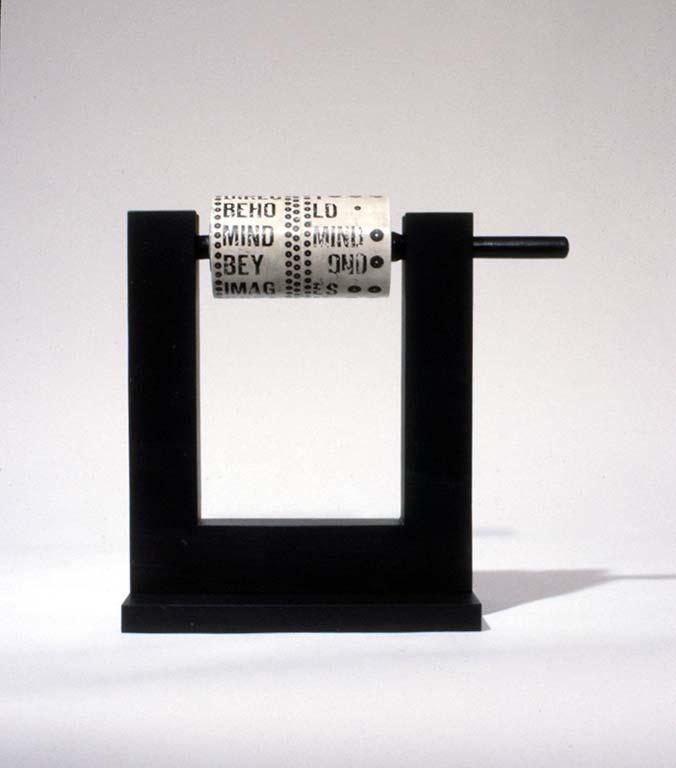
Beyond Images, 1963-1964
Lijn made the hand held Poem Wheels during a period when she lived in Greece in a house without electricity. Lijn was busy building the house and these were the first art works she made there. She thought they might be used the way Greek men used worry beads.
read more
read more
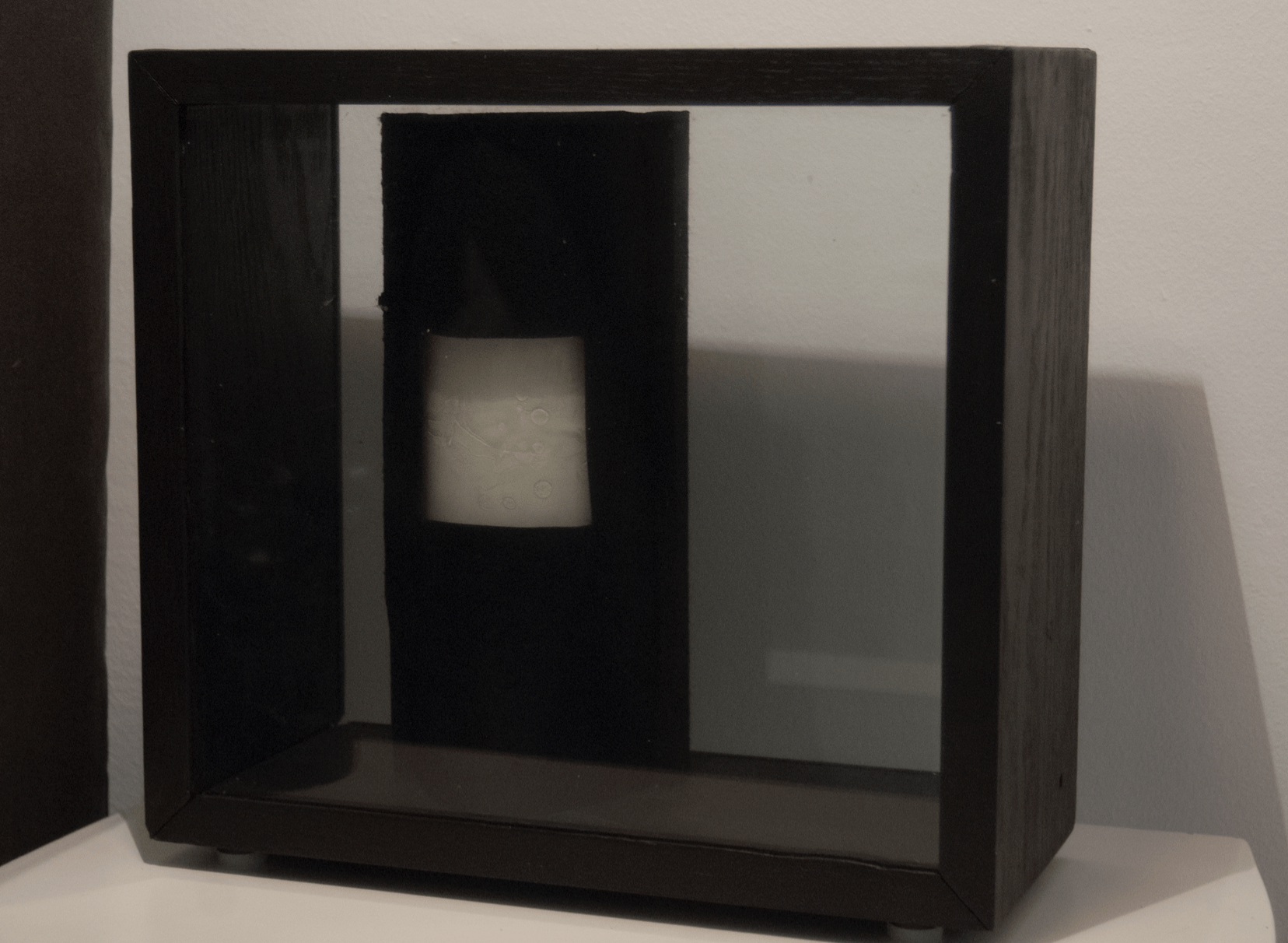
Reflections Tableau 4, 1962
This series of works was inspired by reflections seen through a porthole on a trip from Brindisi to Greece in the summer of 1961. Lijn wanted to find a way to see luminous reflections which appeared like drops of water moving across a transparent window.
read more
read more
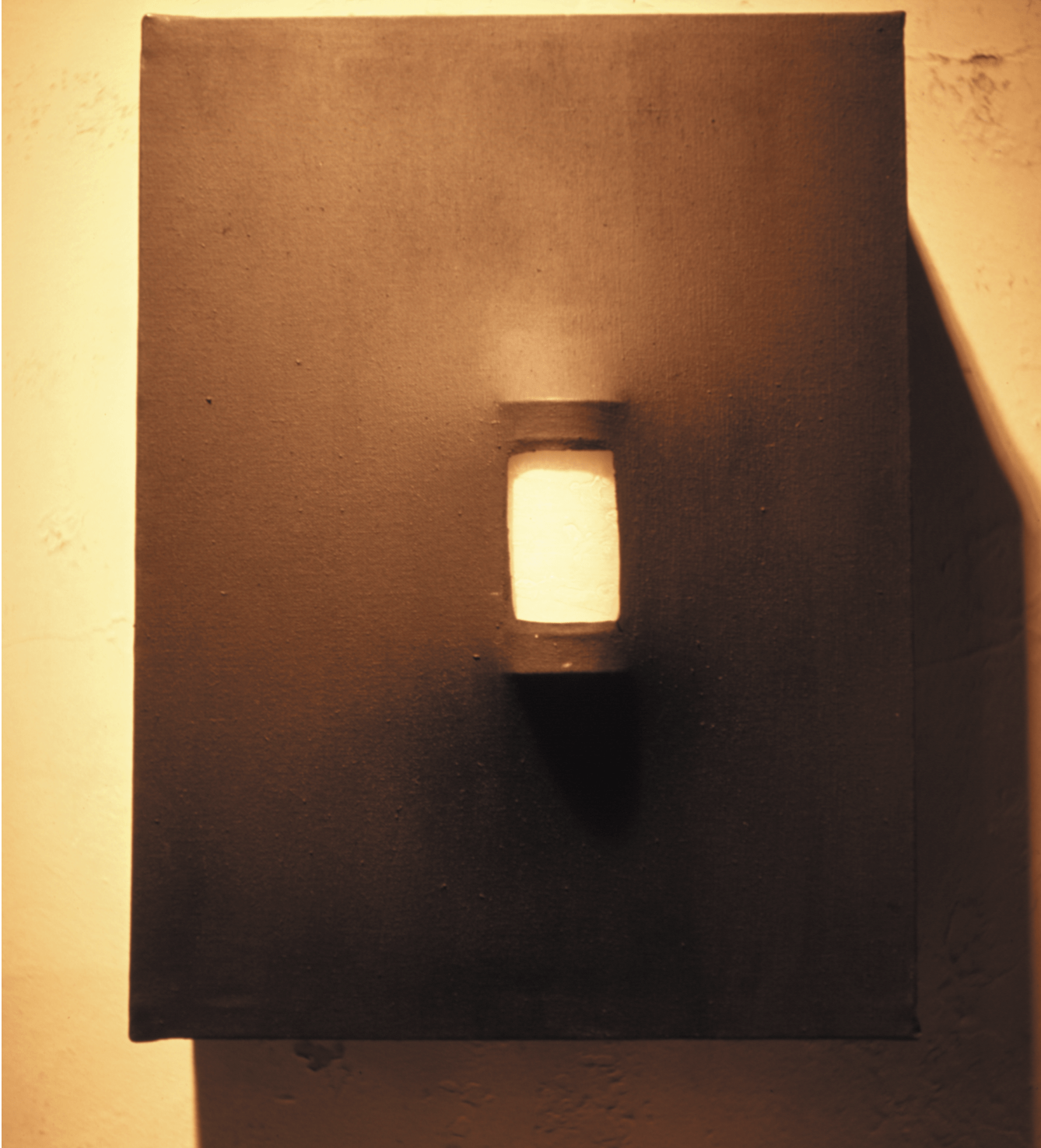
Reflections Tableau 3, 1962
This series of works was inspired by reflections seen through a porthole on a trip from Brindisi to Greece in the summer of 1961. Lijn wanted to find a way to see luminous reflections which appeared like drops of water moving across a transparent window.
read more
read more
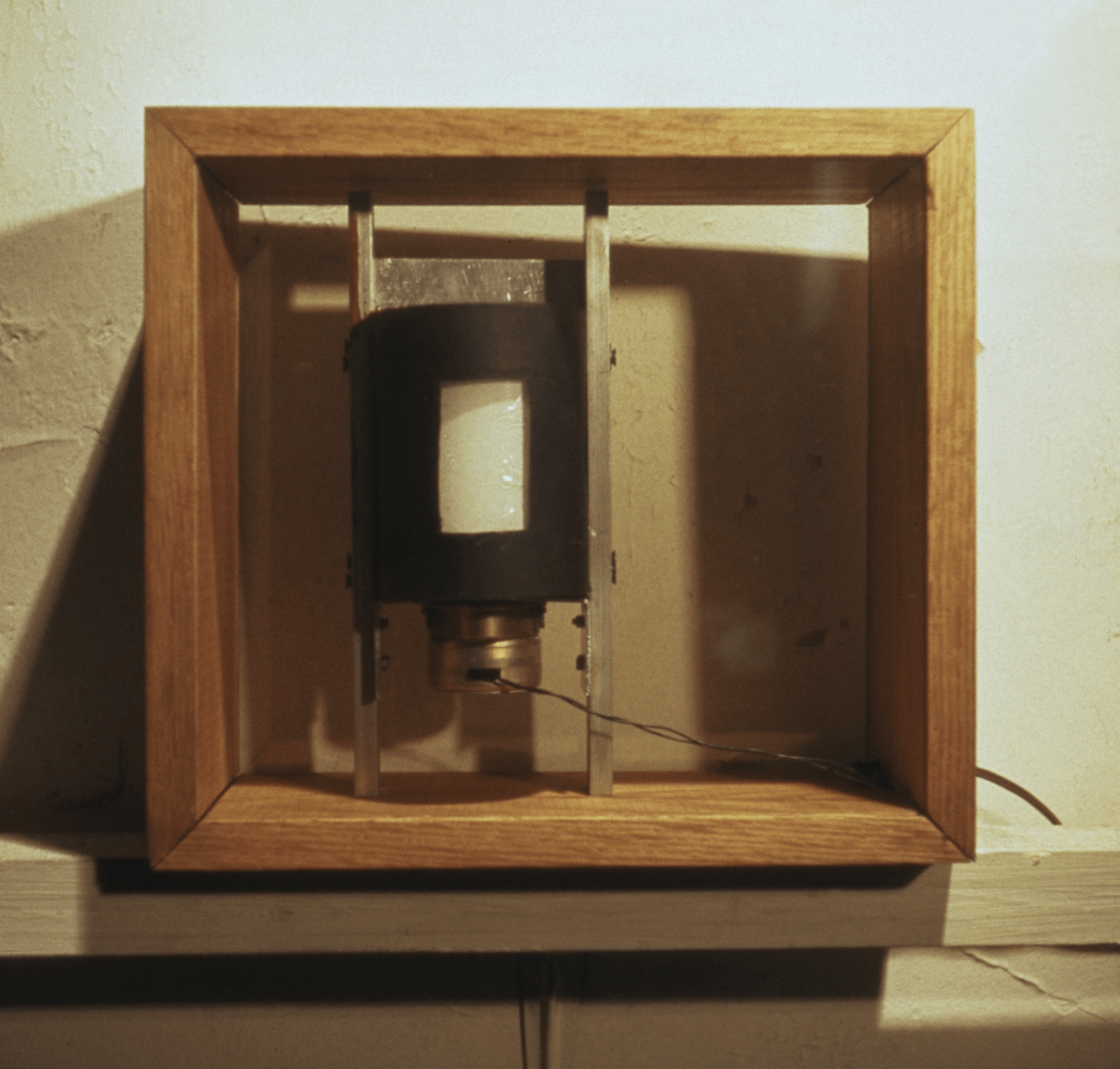
Reflections Tableau 2, 1962
This series of works was inspired by reflections seen through a porthole on a trip from Brindisi to Greece in the summer of 1961. Lijn wanted to find a way to see luminous reflections which appeared like drops of water moving across a transparent window.
read more
read more
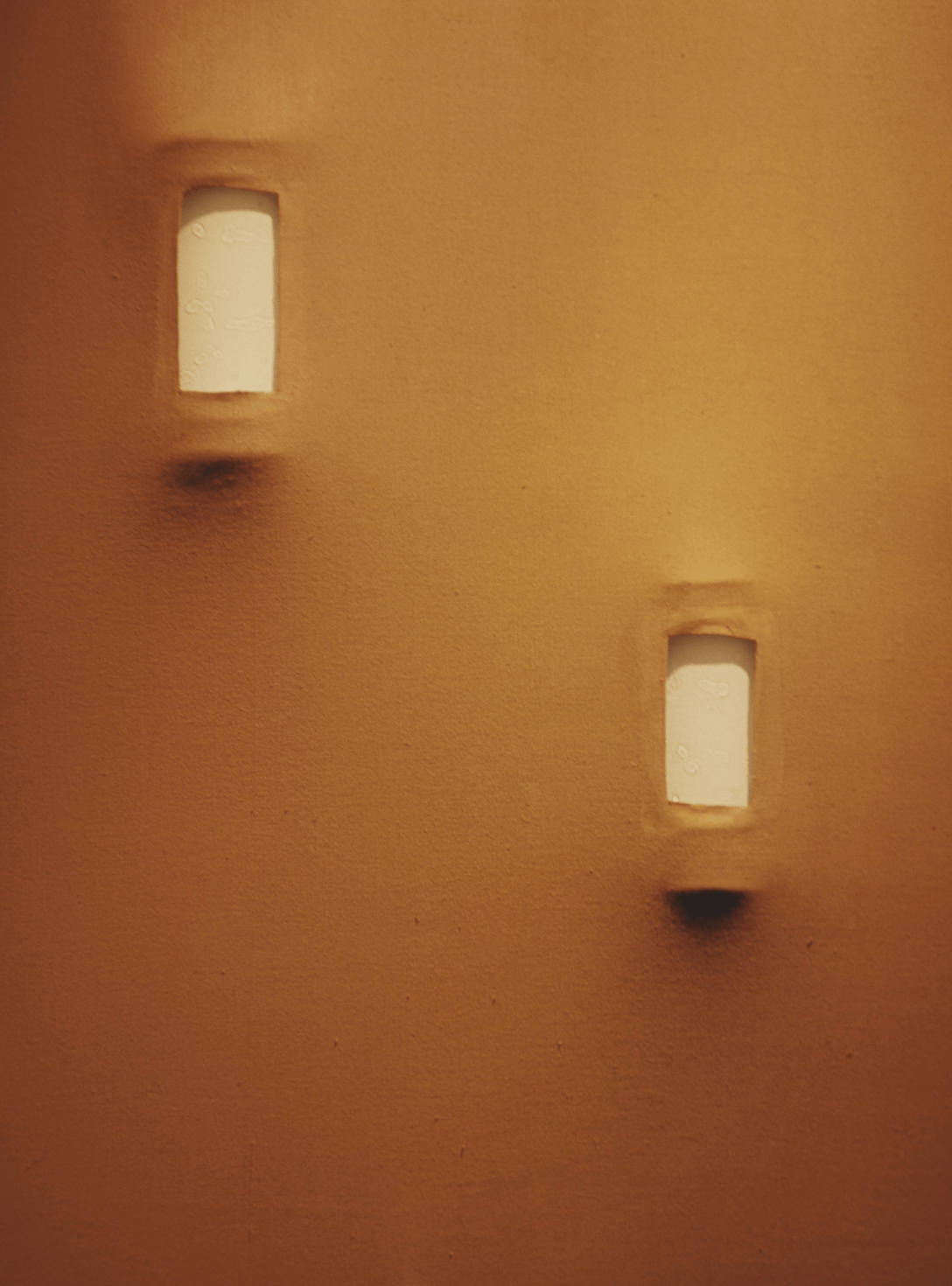
Reflection Tableau 1, 1962
This series of works was inspired by reflections seen through a porthole on a trip from Brindisi to Greece in the summer of 1961. Lijn wanted to find a way to see luminous reflections which appeared like drops of water moving across a transparent window.
read more
read more
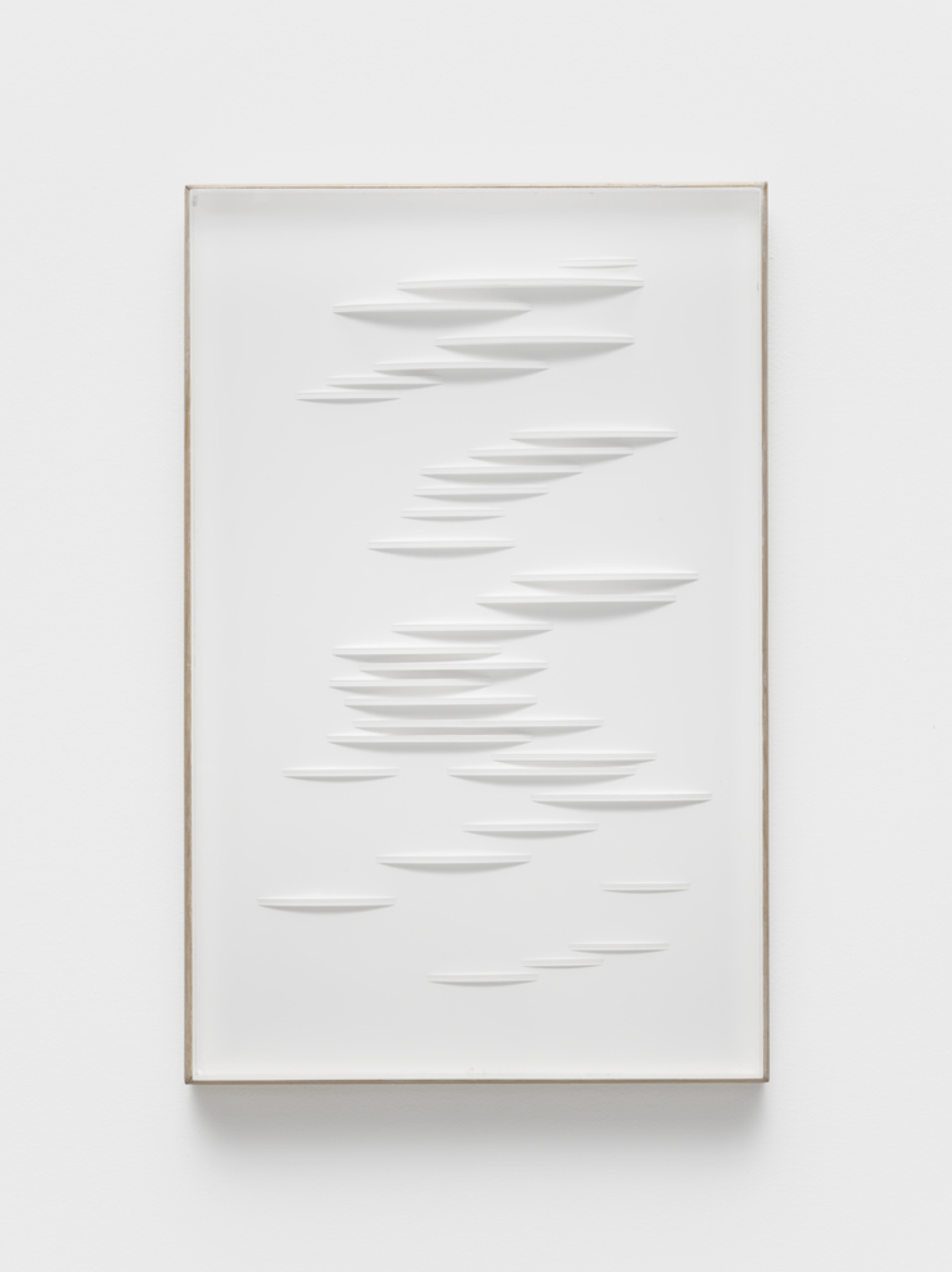
Cuttings, 1962
Cuttings were a development of Lijn’s first experiments with clear acrylic, ‘Fire Lines’, and represent her first attempt to generate an energetic vibration through the use of repetitive elements.
read more
read more
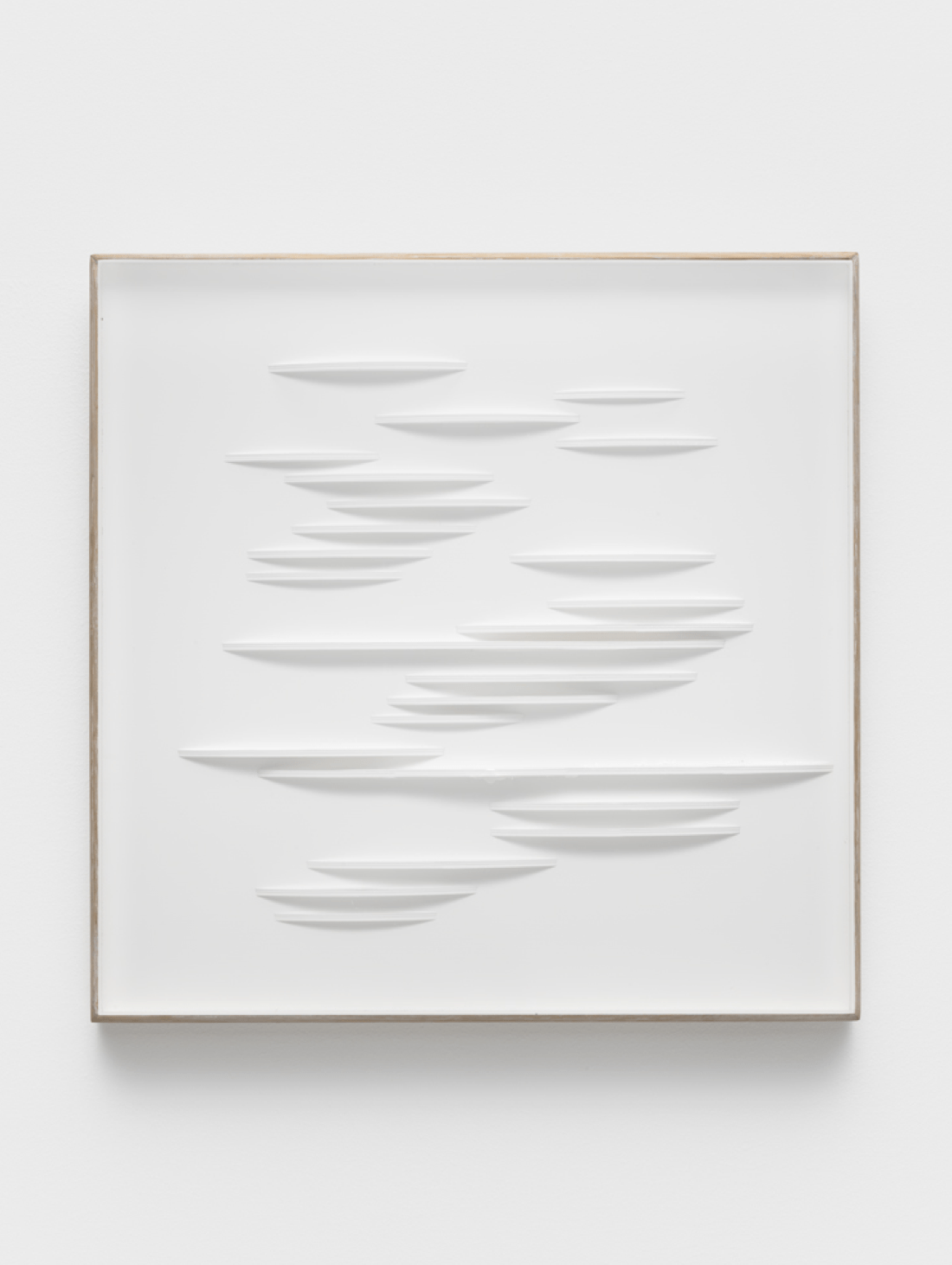
Small Cuttings, 1962
Cuttings were a development of Lijn’s first experiments with clear acrylic, ‘Fire Lines’, and represent her first attempt to generate an energetic vibration through the use of repetitive elements.
read more
read more
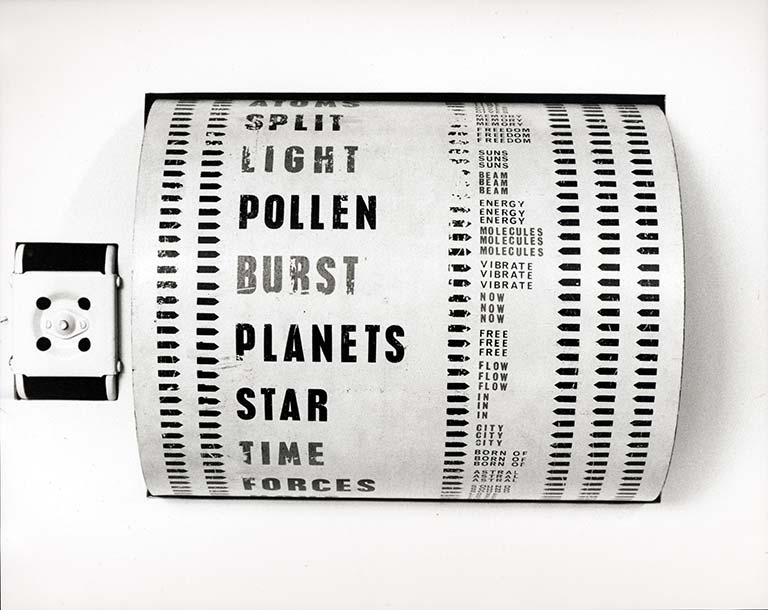
Young Universe, 1962
Lijn wanted the word to be seen in movement, dissolving into a pure vibration until it became the energy of sound.
read more
read more
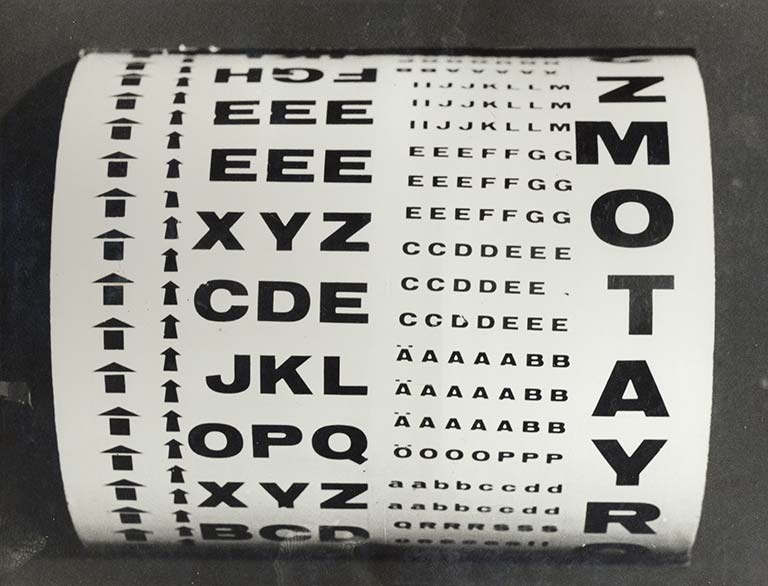
Alphabet, 1962
Lijn wanted the word to be seen in movement, dissolving into a pure vibration until it became the energy of sound.
read more
read more
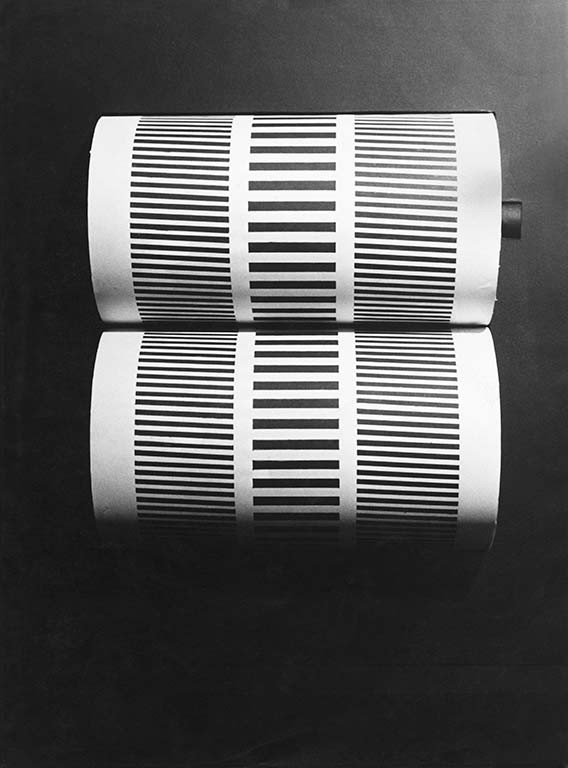
Vibrographe, 1962
Lijn felt that words, made from separate letters, were essentially structures made from lines, and therefore could be deconstructed into energetic vibrations in the same way as the Vibrographe.
read more
read more
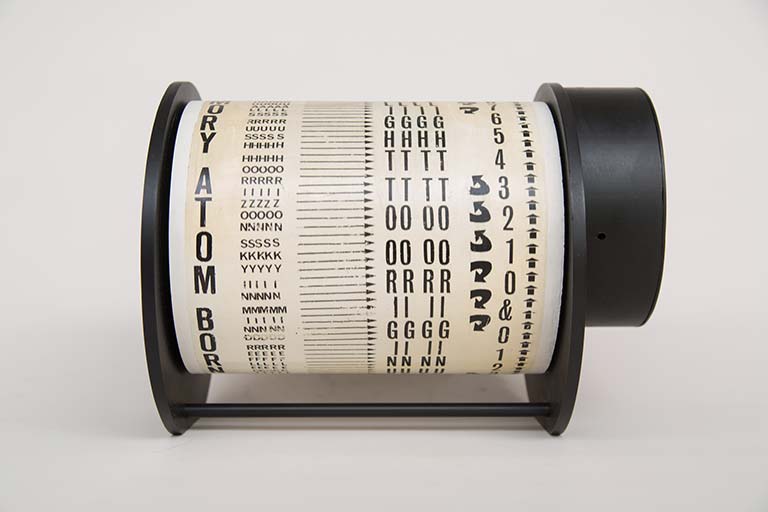
Atom Born Beings, 1962-1963
Lijn wanted the word to be seen in movement, dissolving into a pure vibration until it became the energy of sound.
read more
read more
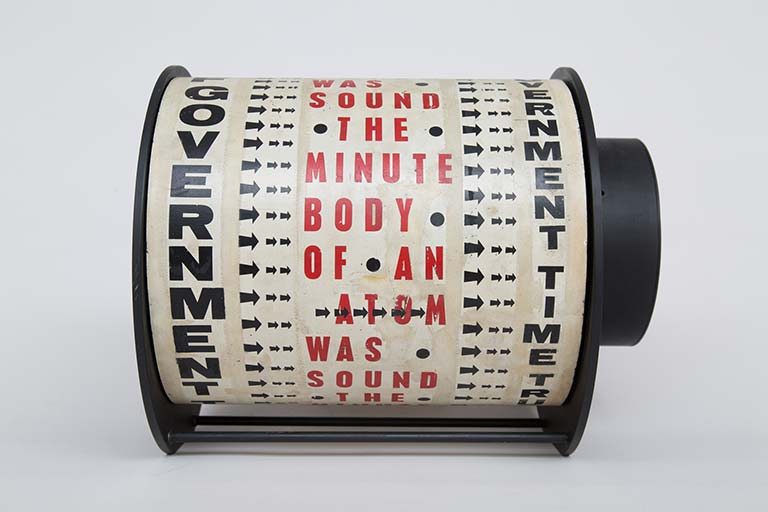
Get Rid of Government Time, 1962
Lijn wanted the word to be seen in movement, dissolving into a pure vibration until it became the energy of sound.
read more
read more
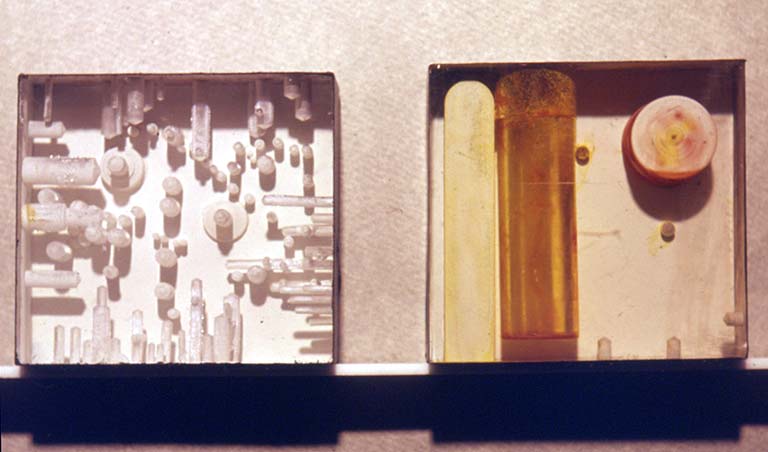
Piercing, 1961
Lijn was interested in the shadows cast by the empty holes which transformed the negative spaces of the drilled holes into positive forms, creating the illusion of solids.
read more
read more
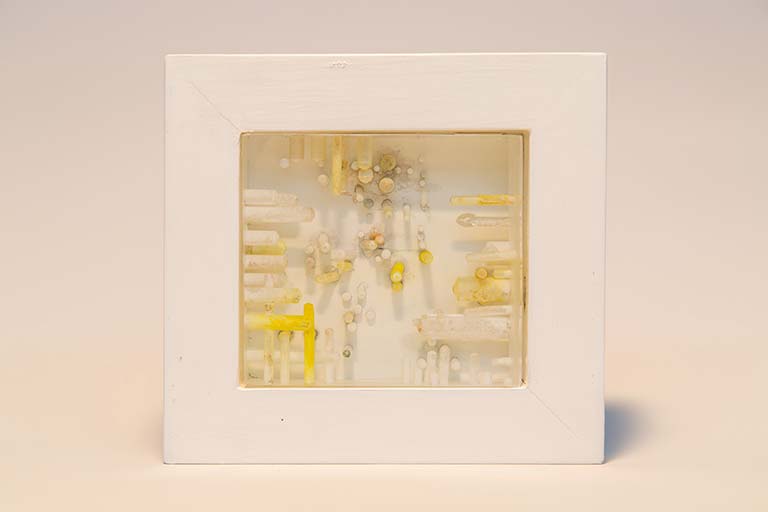
Yellow Drilling, 1961
Lijn was interested in the shadows cast by the empty holes which transformed the negative spaces of the drilled holes into positive forms, creating the illusion of solids. Lijn felt she had created an architecture of the void.
read more
read more
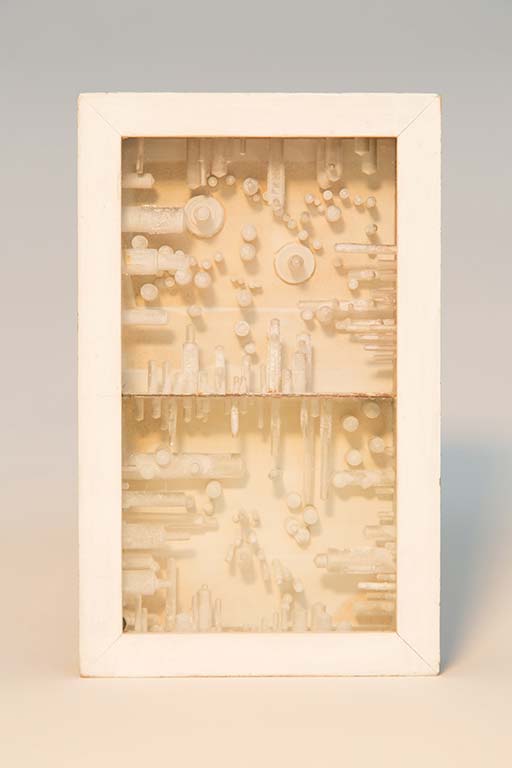
Double Drilling, 1961
Lijn was interested in the shadows cast by the empty holes which transformed the negative spaces of the drilled holes into positive forms, creating the illusion of solids. Lijn felt she had created an architecture of the void.
read more
read more
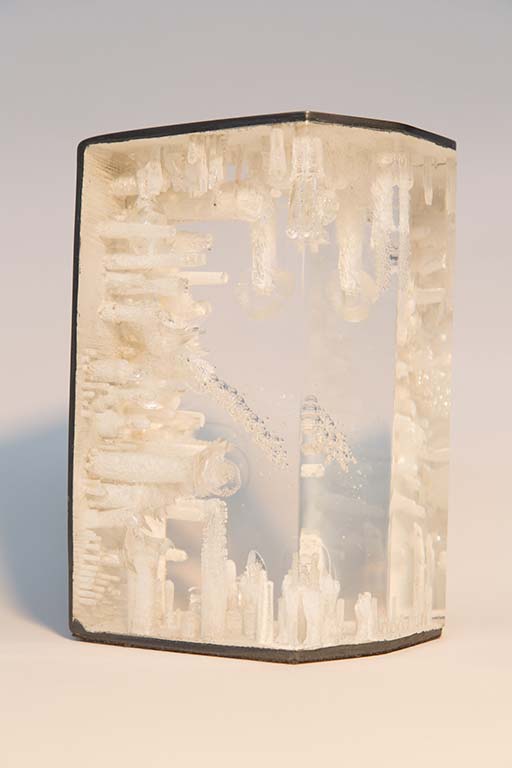
Inner Space, 1961
Lijn was interested in the shadows cast by the empty holes which transformed the negative spaces of the drilled holes into positive forms, creating the illusion of solids. Lijn felt she had created an architecture of the void.
read more
read more